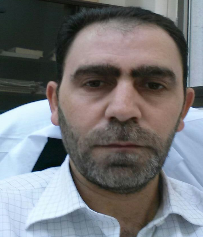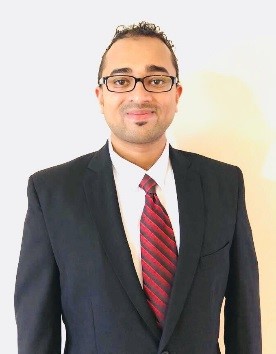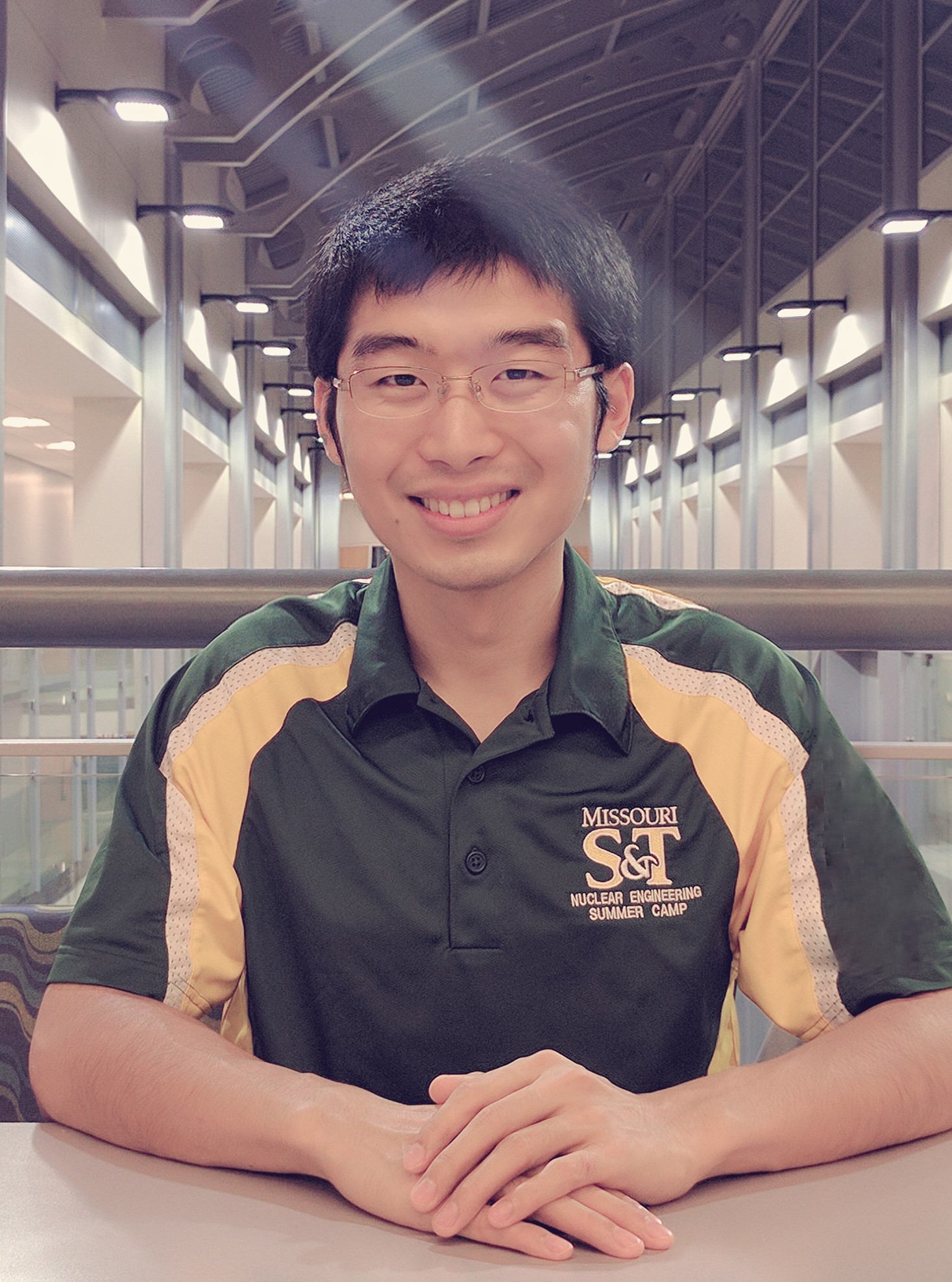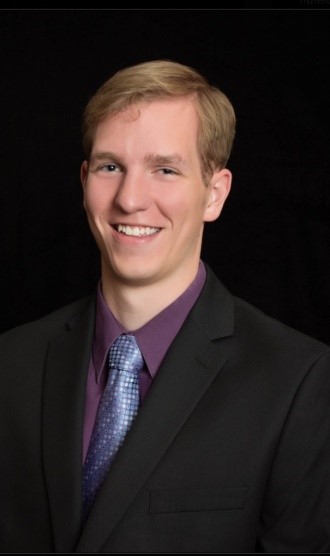People
Bio
Dr. Joseph Graham joined the Nuclear Engineering faculty at Missouri S&T as an assistant professor in the fall of 2015. He received his Ph.D. diploma in Nuclear Engineering from the University of Texas at Austin in collaboration with Sandia National Laboratories in 2013. From 2013-2015 he held a postdoctoral position at the Ion Beam Materials Laboratory at the University of Tennessee, Knoxville. His research interests include: radiation effects in nuclear fuels, next generation nuclear ceramics, and nuclear waste forms; performance of electroceramic devices in radiation environments; transport and physical effects of fission products in nuclear fuel and reactor components; and advanced characterization techniques for nuclear materials.
Ph.D. Students
Raul Florez obtained his bachelor's degree in chemical engineering from the School of Mines of the National University of Colombia (UN) in 2011. After graduation, he received a fellowship from Colombian Ministry of Science (COLCIENCIAS) and joined the Electrochemical Engineering research group (GRIEQUI) at UN-Medellin. As a Junior Research Assistant, Raul worked at GRIEQUI between 2012 and 2013 conducting research on the synthesis and characterization of cermet electrodes for direct oxidation of biogas mixtures. In 2014, Raul started his master studies in Nuclear Engineering at Missouri University of Science and Technology (MST). He obtained his master's degree in 2016 with a thesis on the Fabrication of Light-Weight Cement-Composites for of Dry Casks Applications. Currently, Raul pursues his doctoral studies in Nuclear Engineering under the supervision of Dr. Joseph Graham. His dissertation aims to understand the microstructural evolution of ion irradiated Zirconium Carbide (ZrC) as a function of radiation damage, fabrication and processing conditions. To achieve these goals, Raul uses both experimental and modeling techniques in a complementary fashion. Raul's research interest include: Synthesis and Fabrication of Nuclear Ceramics (Fuels and Waste Matrices), Radiation Damage, Ex-situ and In-operando Material Characterization and Property Evaluation (Structural, Thermal, Mechanical and Electrochemical Properties) Multi-Scale Simulation of Nuclear Materials.
 Salah Alsmairat , PhD student in nuclear engineering department (MST), he received BSc in applied physics (2002) from Jordan University of science and technology, and MSc in nuclear application from Aachen University of applied science. Salah has started his PhD degree 2016 after working in King Abdul Aziz University 2011-2016 in nuclear engineering department, as a lecturer and radiation safety officer, in addition to conducting experimental research on gamma and neutrons backscattering imaging. The research was focusing on using backscattered gamma and neutrons to detect pipes defects under insulation, and the scale in flair pipes online without shutting down the facility. Currently his research criteria is material science, using Density Functional Theory to calculate electron phonon coupling in metals, and the effect of impurities on the coupling, which affects the thermodynamic and transport properties in the materials.
Salah Alsmairat , PhD student in nuclear engineering department (MST), he received BSc in applied physics (2002) from Jordan University of science and technology, and MSc in nuclear application from Aachen University of applied science. Salah has started his PhD degree 2016 after working in King Abdul Aziz University 2011-2016 in nuclear engineering department, as a lecturer and radiation safety officer, in addition to conducting experimental research on gamma and neutrons backscattering imaging. The research was focusing on using backscattered gamma and neutrons to detect pipes defects under insulation, and the scale in flair pipes online without shutting down the facility. Currently his research criteria is material science, using Density Functional Theory to calculate electron phonon coupling in metals, and the effect of impurities on the coupling, which affects the thermodynamic and transport properties in the materials.
 Alaa Milibari is a Ph.D. candidate in Nuclear Engineering at Missouri University of Science and Technology working under the supervision of Dr. Joseph Graham in the area of Irradiated Surface Thermal Diffusivity Measurement. He received a B.S. degree in 2009 from Umm al Qura University, Saudi Arabia and an M.S. degree in nuclear engineering in 2015 from Missouri University of Science and Technology. Before he earned his master he worked in King Abdulaziz City for Science and Technology (KACST).
Alaa Milibari is a Ph.D. candidate in Nuclear Engineering at Missouri University of Science and Technology working under the supervision of Dr. Joseph Graham in the area of Irradiated Surface Thermal Diffusivity Measurement. He received a B.S. degree in 2009 from Umm al Qura University, Saudi Arabia and an M.S. degree in nuclear engineering in 2015 from Missouri University of Science and Technology. Before he earned his master he worked in King Abdulaziz City for Science and Technology (KACST).
Mubarak Albarqi is a Ph.D. candidate in Nuclear Engineering Department at Missouri University of Science and Technology. He received his BSc from Electrical Engineering Department at Umm Al-Qura University, Saudi Arabia. In Dec 2014, he received his M.S. degree in Nuclear Engineering from Missouri University of Science & Technology. His Ph.D. research is focused on CAD designing and Monte Carlo N-Particle code (MCNP) simulation of neutron depth profiling (NDP) system under the guidance of Dr. Joseph Graham. NDP is a (non-destructive) analysis technique which is based on isotopes of light elements that emit charged particles upon capturing thermal neutron.
 Zhongmin Jin is a Ph.D. candidate in Nuclear Engineering at Missouri University of Science and Technology with Dr. Joseph Graham in the area of Gamma-Ray Computed and Emission Tomography. He received his M.S. degree in Nuclear Engineering from North China Electric Power University. Before joining the Ph.D. program at Missouri S&T, he also worked as an engineer at State Nuclear Power Research Institute (SNPRI), where he focused on the preliminary advanced reactor concept design and reactor physics simulations.
Zhongmin Jin is a Ph.D. candidate in Nuclear Engineering at Missouri University of Science and Technology with Dr. Joseph Graham in the area of Gamma-Ray Computed and Emission Tomography. He received his M.S. degree in Nuclear Engineering from North China Electric Power University. Before joining the Ph.D. program at Missouri S&T, he also worked as an engineer at State Nuclear Power Research Institute (SNPRI), where he focused on the preliminary advanced reactor concept design and reactor physics simulations.
 Maria Camila Garcia Toro was born in Medellin, Colombia. She was accepted into the Engineering School at the National University of Colombia in 2007 and graduated in April 2014 with a Bachelors of Chemical Engineering. During her undergraduate program, Maria Camila was a member of the research group in Electrochemical Engineering where she developed her thesis entitled "Construction and Characterization of anodes NiO-CGO for Hydrogen Oxidation in Intermediate- Temperature Solid Oxide Fuel Cells." During the summer 2013, she did an internship in the Department of Chemical and Biomolecular Engineering of the University of Tennessee, Knoxville, Tennessee, with the support of Dr. Thomas A. Zawodzinski and Dr. Gabriel Goenaga. She acted as a Graduate Research Assistant for the Nuclear Engineering Department of the Missouri University of Science and Technology. Her Master research was focused on the synthesis and characterization of radioactive nanostructures by neutron radiation and ionizing radiation in the Missouri University of Science and Technology research nuclear reactor (MSTR) to be used in cancer treatment, specifically on the synthesis of radioactive gold nanoparticles and bimetallic Au/ Ag nanoparticles. Maria Camila received her Master's degree in Nuclear Engineering in July 2016 from the Missouri University of Science and Technology, Rolla, Missouri, USA. Maria Camila was an active peer learning assistant in the Learning Enhancement Across Disciplines (LEAD) program in the Missouri University of Science and Technology. She was in charge of Nuclear Technology, Applications and Nuclear Materials and Spanish I (FS15) and Reactor Heat Transfer and Spanish I (SP16). Maria Camila was a student member of the American Nuclear Society (ANS) since 2016.
Currently, Maria Camila is a Ph.D. Candidate in Nuclear Engineering and under the direction of Dr. Joseph Graham. Her research is focused on the surface-enhanced Raman spectroscopy using gold nanoparticles deposited in swift heavy ion tracks in quartz.
Maria Camila Garcia Toro was born in Medellin, Colombia. She was accepted into the Engineering School at the National University of Colombia in 2007 and graduated in April 2014 with a Bachelors of Chemical Engineering. During her undergraduate program, Maria Camila was a member of the research group in Electrochemical Engineering where she developed her thesis entitled "Construction and Characterization of anodes NiO-CGO for Hydrogen Oxidation in Intermediate- Temperature Solid Oxide Fuel Cells." During the summer 2013, she did an internship in the Department of Chemical and Biomolecular Engineering of the University of Tennessee, Knoxville, Tennessee, with the support of Dr. Thomas A. Zawodzinski and Dr. Gabriel Goenaga. She acted as a Graduate Research Assistant for the Nuclear Engineering Department of the Missouri University of Science and Technology. Her Master research was focused on the synthesis and characterization of radioactive nanostructures by neutron radiation and ionizing radiation in the Missouri University of Science and Technology research nuclear reactor (MSTR) to be used in cancer treatment, specifically on the synthesis of radioactive gold nanoparticles and bimetallic Au/ Ag nanoparticles. Maria Camila received her Master's degree in Nuclear Engineering in July 2016 from the Missouri University of Science and Technology, Rolla, Missouri, USA. Maria Camila was an active peer learning assistant in the Learning Enhancement Across Disciplines (LEAD) program in the Missouri University of Science and Technology. She was in charge of Nuclear Technology, Applications and Nuclear Materials and Spanish I (FS15) and Reactor Heat Transfer and Spanish I (SP16). Maria Camila was a student member of the American Nuclear Society (ANS) since 2016.
Currently, Maria Camila is a Ph.D. Candidate in Nuclear Engineering and under the direction of Dr. Joseph Graham. Her research is focused on the surface-enhanced Raman spectroscopy using gold nanoparticles deposited in swift heavy ion tracks in quartz.
M.S. Students
 Bryant Kanies is a Master's of Science student studying Nuclear Engineering. He obtained his B.S. in Nuclear Engineering from Missouri University of Science and Technology in May of 2017. His currently working on two main projects. The first of these projects focuses on understanding the effects which swift heavy ions have on material properties. The passage of these ions through a material can cause columnar nano structures called ion tracks. Bryant is examining how ion tracks affect phonon confinement and thermal conductivity in SiO2 and CaF2. His second project focuses on the creation of a submersible, gamma-ray, computed tomography (CT) system for the imaging of nuclear fuels. This system will be able to perform both emission and transmission type tomography. He is working on the modeling and designing of the system. Along with these projects, Bryant is also interested in advanced reactors, the end of the nuclear fuel cycle, and fusion systems.
Bryant Kanies is a Master's of Science student studying Nuclear Engineering. He obtained his B.S. in Nuclear Engineering from Missouri University of Science and Technology in May of 2017. His currently working on two main projects. The first of these projects focuses on understanding the effects which swift heavy ions have on material properties. The passage of these ions through a material can cause columnar nano structures called ion tracks. Bryant is examining how ion tracks affect phonon confinement and thermal conductivity in SiO2 and CaF2. His second project focuses on the creation of a submersible, gamma-ray, computed tomography (CT) system for the imaging of nuclear fuels. This system will be able to perform both emission and transmission type tomography. He is working on the modeling and designing of the system. Along with these projects, Bryant is also interested in advanced reactors, the end of the nuclear fuel cycle, and fusion systems.
 Nick Spitznagel is a master's student in Nuclear Engineering at Missouri S&T currently researching the 3-omega method and it's use for thermal diffusivity of thin films and surface affected regions. Such a technique is useful for selectively measuring the surface properties instead of the bulk material. To accomplish this in short, a thin metallic strip is sputtered onto the surface via a shadow mask. This metallic strip has a current run through it and the voltage response across the strip is measured. A fluctuation in the resistance, joule heating, and temperature create a third harmonic in the voltage that can be filtered out and used to determine thermal diffusivity.
Nick Spitznagel is a master's student in Nuclear Engineering at Missouri S&T currently researching the 3-omega method and it's use for thermal diffusivity of thin films and surface affected regions. Such a technique is useful for selectively measuring the surface properties instead of the bulk material. To accomplish this in short, a thin metallic strip is sputtered onto the surface via a shadow mask. This metallic strip has a current run through it and the voltage response across the strip is measured. A fluctuation in the resistance, joule heating, and temperature create a third harmonic in the voltage that can be filtered out and used to determine thermal diffusivity.
Undergraduate Students
Eric Dalgetty is currently in his Junior year pursuing a BS in Nuclear Engineering from the Missouri University of Science and Technology. In addition to his studies, Eric is also engaged in research involving high vacuum and electron gun design. In his garage he has built a high vacuum chamber capable of reaching pressures below 8x-9 torr. In the Summer and Fall of 2018, he will be interning at the ITER organization in Cadarache, France.
Former Students
Coming soon